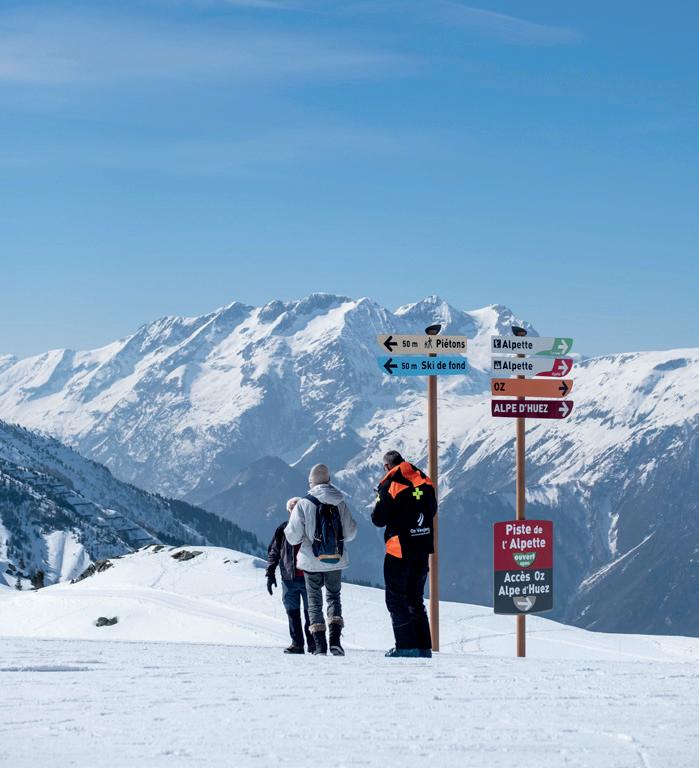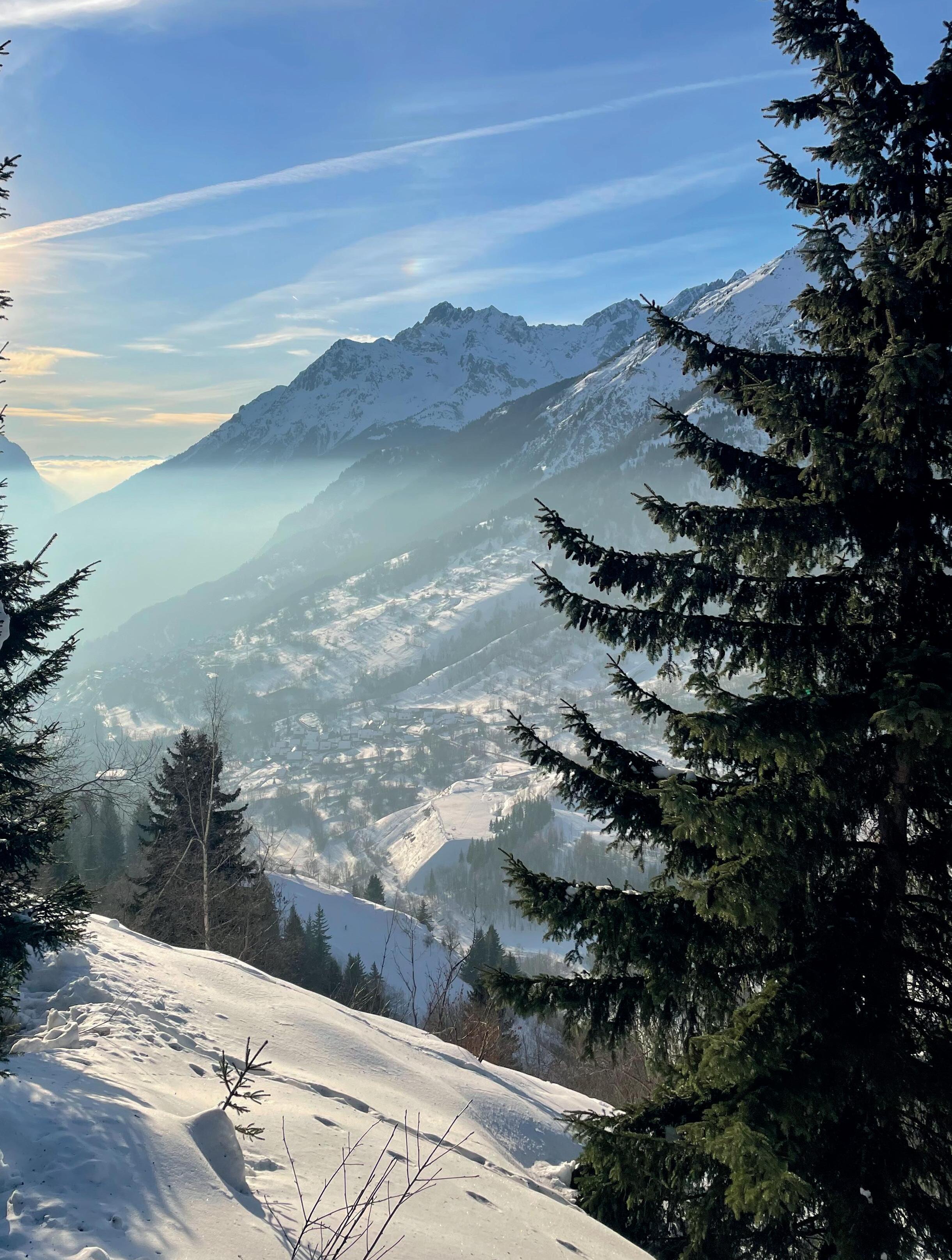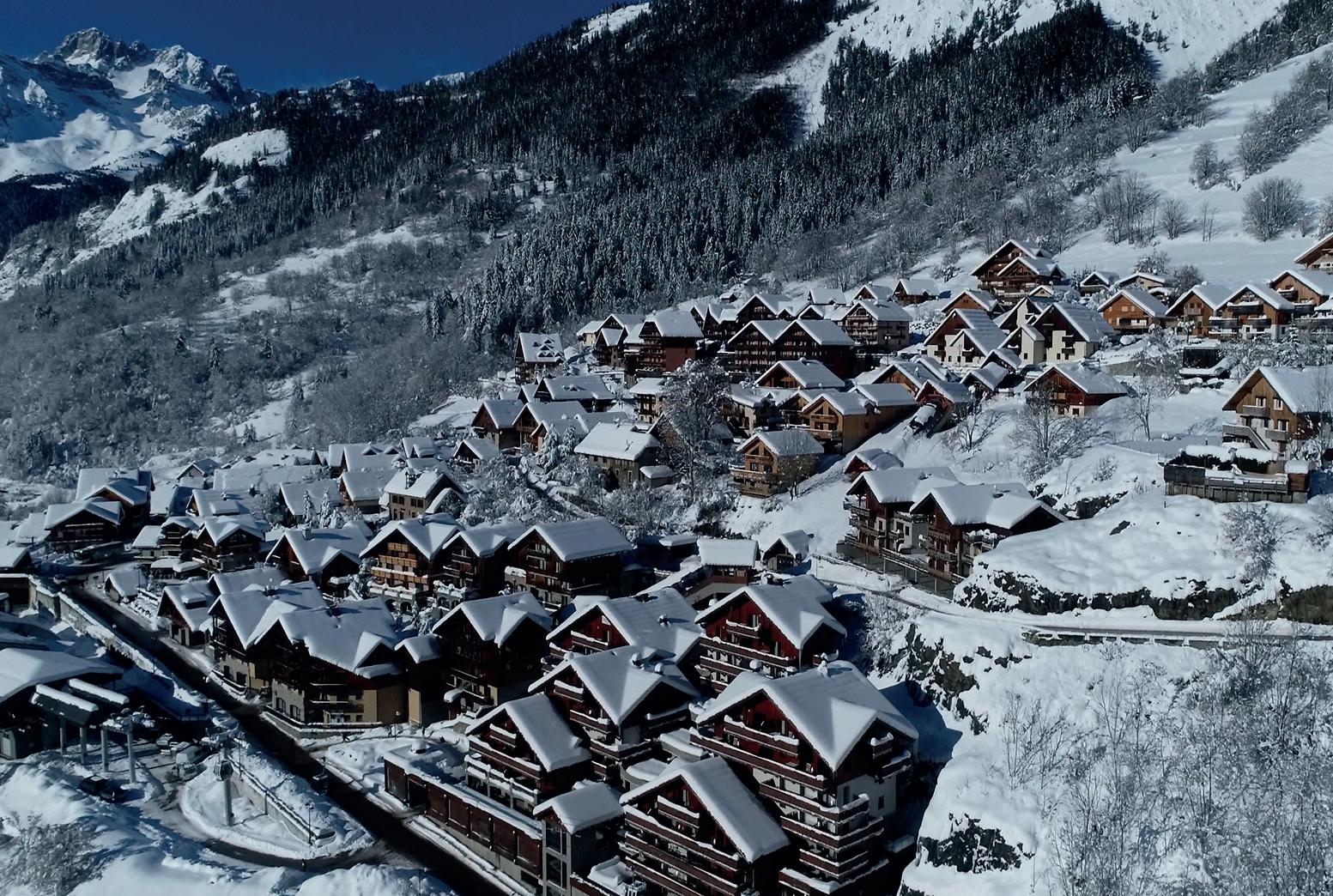
2 minute read
A TALE OF two times
The small French resort of Vaujany has leapt into the 21st century yet stays true to its ancient roots, while over the page we highlight some more alternative winter holiday ideas

Advertisement
BY Rebecca Miles

We have enough,” says Yves Genevois, the mayor of Vaujany, a small ski resort in the southern French Alps. And with those three simple words, Mayor Genevois effortlessly sums up the character and soul of this village – it’s not greedy, it’s happy and content with its lot, and is one of a growing number of ski resorts that are recognising that a path of constant growth with endless new buildings and developments just isn’t sustainable in this delicate alpine environment.
Vaujany was originally a farming village and dates back over 1,000 years. Set in the Grandes Rousses mountains in the Isère department, it’s at an altitude of 1,250 metres. Surrounded by alpine pastures, you won’t find any high-rise purpose-built blocks of apartments here; instead, it’s all pretty wooden chalets in keeping with its traditional past.
Arrive in the village and it’s not obviously clear where the ski slopes are, but cleverly designed to sit at the heart of the tiered village, with lots of lifts and escalators for easy pedestrian access, is a 160-person cable car and a smaller gondola that link the village to the much bigger Alpe d’Huez domain and its 250km of slopes.

Skiing here is a tale of two contrasts. The pistes immediately above and around Vaujany are generally peaceful and largely suit early intermediates, while those in the main Alpe d’Huez domain are livelier and have options for every ability, from beginners through to experts –both have their merits and there’s a huge amount of terrain to cover, but there’s something refreshing about returning to Vaujany’s easygoing slopes.
Despite being surrounded by peaks that reach over 3,000 metres and close, as the crow files, to the burgeoning Alpe d’Huez, Vaujany is one of France’s newest ski resorts. For a long time the village was slowly in decline as its younger residents turned their back on farming life and left the mountains for opportunities elsewhere.
This sleepy village had its fortunes changed in 1988, when EDF, the
Winter holidays
French state-owned electricity company, built one of the country’s most powerful hydroelectric plants within its domain and gave the municipality a hefty payment (plus annual rent that gives a nice boost to the coffers). Collectively, the commune decided to spend it on building that big cable car to Alpe d’Huez and linking their future and fortunes to their famous big brother, while pledging to remain true to their rural roots.
The mayor and council recognise they must constantly reinvent the resort if it’s to remain attractive to visitors, but they choose to do this by renovating and rejuvenating existing buildings, rather than building anything new.
I stayed at the Hôtel Les Cîmes, a 10-bedroom family-run hotel at the entrance to the village that’s been in situ for over 100 years. Fully revamped within its original stone walls, it maintains its traditional footprint but is also full of modern touches, such as fast Wi-Fi and wonderfully comfortable beds.
The decision to build the hydroelectric plant, the Grand Maison, here, rather than in any other Alpine communes, changed the fortunes of this traditional farming village. “In 30 years, we went from the middle ages to the 21st century,” says Mayor Genevois.


On a guided snowshoe walk with Alain Hilion later that day, it’s impossible to tell we’re in the 21st century. As we set off among the snow-covered pines into the Montfrais valley, the only sound is the scrunch of the snow beneath our tennis-racquet-shaped shoes and the odd joyful bark from Polka, Alain’s three-year-old border collie. We spot the tracks of hares and squirrels, and Alain points out the tell-tale signs of chamois, who’ve been eating the trunks of the pine trees.
The sun sets across the valley as we descend but with a full moon behind us, the light stays long after the sun dips behind the mountain ridge. It makes for a spectacular and timeless view.










